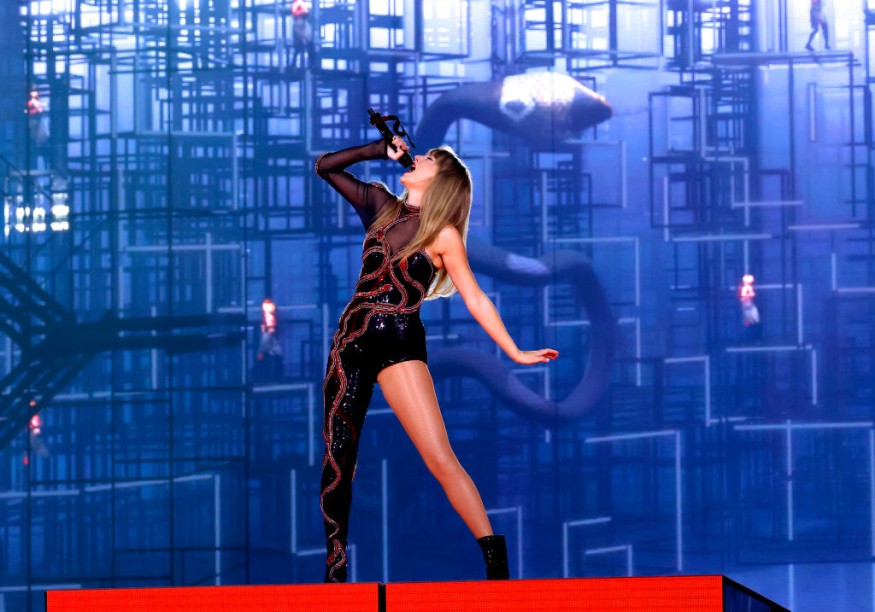During Taylor Swift's concert in Downtown Seattle, her enthusiastic fans created seismic activity, recorded as signals similar to a magnitude 2.3 earthquake on a nearby seismometer, Change Che wrote for The New York Times.
Mouse Reusch, a seismologist from the Pacific Northwest Seismic Network, acknowledged it as one of the largest concerts in recent times, with around 70,000 attendees and a vibrant atmosphere filled with music and concert-related items.

Swift Quake Occurs During Eras Tour Concert in Seattle
The seismic event referred to as the "Swift Quake" was analyzed by Jackie Caplan-Auerbach, a seismologist from Western Washington University, who reported a maximum ground acceleration of approximately 0.011 meters per second squared.
As per the report in the Times, seismologists typically use acceleration measurements to gauge ground vibrations, which are then converted into the widely recognized Richter scale used for earthquake assessment.
While seismometers can detect various ground vibrations, including those caused by vehicles and stampeding animals, the magnitude of the "Swift Quake" has led to comparisons with the 2011 pro football "Beast Quake." This previous seismic activity was triggered by exuberant Seattle Seahawks fans celebrating a last-minute touchdown by Marshawn Lynch, also known as "Beast Mode."
During the 2011 event, the seismic activity registered close to a magnitude 2.0 earthquake at the seismic station located just outside Lumen Field.
The "Swift Quake" readings were recorded during Taylor Swift's concerts on both July 22 and 23. The ground shaking during these concerts was even more intense than during the 2011 Seahawks game, being described by Caplan-Auerbach as "twice as hard."
Although the "Swift Quake" had a magnitude 0.3 greater than the 2011 event, this difference corresponds to a twofold increase according to the logarithmic nature of the Richter scale.
Caplan-Auerbach said the main distinction lies in the duration of shaking between the two events, CNN reported. Cheering after a touchdown lasts only a few seconds and then subsides, making it more sporadic compared to a concert.
In Taylor Swift's case, the shaking endured for about 10 hours due to the rhythmic nature of the music, speakers, and beat. All the energy generated during the concert transmitted into the ground, causing it to shake.
Despite her excitement about the prospect of becoming a Swiftie, Caplan-Auerbach's primary motivation is to make science more accessible and understandable. She believes that science does not have to be confined to laboratories with people in white coats; it can be found in everyday observations and experiences, and she cherishes the opportunity to demystify science for others.
READ ALSO : What the 7.8-Magnitude Earthquake in Turkey and Syria Could Teach the World in Terms of Disaster Response
Reason Behind Swift Quake
During Taylor Swift's Eras Tour, her concerts in Seattle caused significant ground shaking, likely due to the combination of the music from the sound system and the synchronized dancing of her passionate fans, according to seismologists. The two back-to-back shows in Seattle exhibited similar patterns on the seismometer, indicating nearly identical sets were performed.
Swift's tour has drawn massive crowds, with tickets for her Santa Clara show selling for exorbitant prices on a secondhand ticket exchange. The seismic activity during the concerts peaked twice, first around 7:30 p.m. and then around 9:30 p.m., although the specific songs responsible for the peaks were not immediately identified.
Seismometers can detect ground vibrations caused by various sources, not just concerts, including cars, trains, and wind. Experts shared to the Times that the same seismometer recorded signals during performances by The Weeknd and is expected to do so during Beyoncé's upcoming concert.
The attention garnered by the "Swift Quake" has been seen as a positive, with hopes that it might inspire some young Swifties to pursue careers in seismology or earth sciences.
Human Activity May Cause Earthquakes
A 2017 study published in Seismological Research Letters revealed 730 locations where human activity has triggered earthquakes in the last 150 years. Surprisingly, some human-induced earthquakes (HiQuakes) reached magnitudes as high as 7.9. Researchers were alarmed to observe a rising trend in the number of such earthquakes in certain regions worldwide.
These human-induced earthquakes pose significant risks to human safety and the environment, and geologists are still in the early stages of comprehending their potential consequences.
HiQuakes can occur far from tectonic plate edges and are often observed in regions with little or no prior seismic activity, National Geographic reported. The study identified mining as the primary cause of human-induced earthquakes, with water reservoir impoundment (dam building) responsible for the deadliest ones.
In the U.S., fracking for oil and natural gas has been linked to induced seismic activity, both directly and through wastewater disposal. Other triggers include nuclear explosions and construction projects. According to geophysicist Miles Wilson, the Earth responds to changes caused by human activities, leading to earthquakes as a result.
RELATED ARTICLE:
Check out more news and information on Earthquake in Science Times.
© 2025 ScienceTimes.com All rights reserved. Do not reproduce without permission. The window to the world of Science Times.












